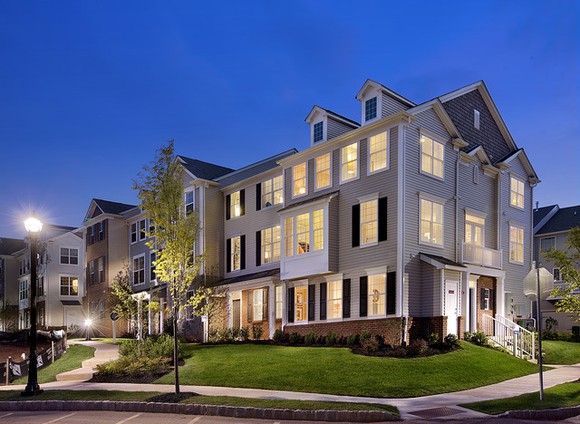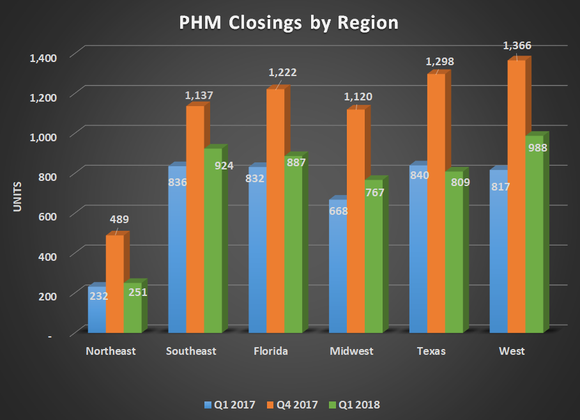To say that PulteGroup (PHM 0.56%) did well this past quarter seems like a bit of an understatement. The company blew past Wall Street expectations with earnings per share of $0.59, compared to consensus estimates of $0.44. On top of the impressive gains in revenue and net income, the company's operating results and sales data suggest that there is still more room for Pulte to grow from here despite rising interest rates.
Let's take a look at PulteGroup's most recent results and delve into the sales data to see what may be coming for the rest of 2018.

Image Source: PulteGroup.
By the numbers
| Metric | Q1 2018 | Q4 2017 | Q1 2017 |
|---|---|---|---|
| Revenue | $1.97 billion | $2.79 billion | $1.63 billion |
| Net income | $170.7 million | $77 million | $91.5 million |
| Diluted EPS | $0.59 | $0.26 | $0.28 |
Data source: PulteGroup earnings release.
Up and down the income statement, PulteGroup hit every mark you would want to see: Total closings were up 9.5% compared to this time last year, with the average selling price growing 10% on top of that, to generate the 20% revenue increase. Of the company's six business regions, only its Texas region saw a decline in home closings, which could be chalked up to lingering effects from Hurricane Harvey back in the third quarter.
The increase in revenue was essential because it helped to offset Pulte's rising labor costs. The company was able to improve its gross margin to 23.6% on home sales and reduce its selling, general, and administrative (SG&A) costs from 14.9% of revenue this time last year to 12.6%. A 12% SG&A rate is still a little on the high end of the homebuilder business, but home sales and new orders are growing fast, requiring a ramp-up in expenses to move that many houses. It should also be noted that this is ahead of management's guidance because it was calling for gross margins between 23% and 23.5% for the year.

Source: PulteGroup earnings release. Chart by author.
What's even more impressive than PulteGroup's sales results are the results we can expect from new orders and its backlog. Using a term from other industries, PulteGroup's new orders-to-closings ratio was 1.48 for the quarter and ended with a backlog of $4.96 billion and an average selling price of $441,000. If it were to maintain this sales pace, that would translate to just enough houses to get through seven months. With sales increasing, though, we can expect that to last for only six months.
What management had to say
One thing that will always get homebuilders' attention are interest rates. With interest rates on the rise and U.S. Treasury rates hitting 3%, there is concern about rising mortgage rates and how they could impact home sales. According to CEO Ryan Marshall in the company's press release, there are more important factors at play right now that more than offset higher interest rates.
Robust buyer demand in the face of mortgage and financial market volatility attests to the strong underpinnings of this housing recovery which is being bolstered by sustained economic growth, good job trends, favorable demographics and a limited supply of homes for sale. Within this environment, we believe that our diversified operating platform, balanced customer base, and supportive land pipeline puts the Company in a strong competitive position to achieve its long-term financial goals.
The takeaway
This late into the cycle, it's quite surprising to see PulteGroup and other homebuilders post such impressive results. Some of that excellent performance is from lower corporate tax rates, but double-digit sales growth is equally impressive.
Despite the length of this housing boom, there are a lot of signs that 2018 isn't going to be the year we see the cycle turn. The inventory of homes for sale across the U.S. is well below the historical average, and new homes are now 11% of all homes sold, the highest rate since before the housing crash. With millennials in the market for their first homes -- better late than never -- there is a huge demand that should fuel PulteGroup's results for some time.

